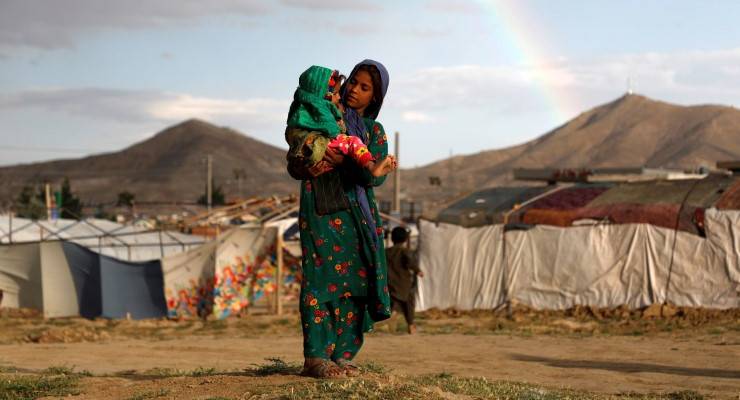
Australia will offer 3000 humanitarian visas for people fleeing the crisis in Afghanistan. Yesterday Prime Minister Scott Morrison confirmed Australia would not expand its refugee program to take more.
“COVID has meant that the process of running our refugee and humanitarian program, like all of our visa programs, have been running at lower levels,” Morrison said.
Meanwhile, just 26 people left Kabul on a military evacuation flight with space for more than 100. Despite months of calls for such a flight, it landed after Kabul had fallen by which time the security situation was too perilous for many people to get to the airport.
The government has also refused to confirm it will grant full residency to Afghans in Australia on protection visas.
“No Afghan visa holder will be asked to return to Afghanistan at this stage,” Foreign Affairs Minister Marise Payne said.
This morning, Immigration Minister Alex Hawke refused to provide clarity for people on protection visas and their families.
Throughout the withdrawal, the government cast a narrow net of protection to Afghans trying to escape the Taliban. Past governments, many of them Liberal governments, have dealt with humanitarian crises with far more generosity.
Syria
In 2015, then prime minister Tony Abbott promised to take 12,000 refugees from Syria as the endless civil war and advance of Islamic State left millions displaced.
That decision followed a bipartisan push to expand Australia’s intake. First, Abbott talked up the prospect of taking more refugees but wouldn’t give a figure. But he also faced calls from Liberal backbenchers and state premiers to respond to the humanitarian crisis. Labor leader Bill Shorten called on the government to commit to a one-off increase of 10,000 people on top of Australia’s regular refugee intake.
In one of his final acts as prime minister, Abbott one-upped him, committing to take 12,000.
Kosovo
Ahead of the decision to expand the Syrian intake, Liberal MPs frequently pointed to the Howard government’s evacuation of Kosovar refugees in 1999. A violent crackdown against ethnic Albanians in Kosovo by largely Serb forces led to thousands displaced.
Australia responded with “Operation Safe Haven”, an evacuation mission which gave 4000 Kosovars temporary protection in Australia. Howard spun this as a moment of great generosity, and the Liberals mythologised it as such. Protection for Kosovars was temporary, and within months the government was pressuring them to return home. Only a handful stayed.
The Howard government also evacuated and provided similar temporary protection to 1800 people from Timor-Leste later that year.
Tiananmen Square
The Tiananmen Square massacre in 1989 moved prime minister Bob Hawke to tears. It also moved him to act, granting asylum to about 42,000 Chinese students in Australia. Cabinet documents released 25 years later show Hawke acted unilaterally — despite significant pressure from key departments.
Vietnam
After the fall of Saigon in 1975, prime minister Gough Whitlam was reluctant to offer protection to substantial numbers of South Vietnamese. That changed dramatically under his Liberal successor, Malcolm Fraser. His government openly accepted Vietnamese refugees, with about 100,000 finally settling in Australia — despite widespread opposition.
Over the past few days, there have been many comparisons drawn between the fall of Saigon and the Taliban’s recapture of Kabul. But the approach taken by two different Australian governments to people caught in the crisis couldn’t be more stark.








Crikey is committed to hosting lively discussions. Help us keep the conversation useful, interesting and welcoming. We aim to publish comments quickly in the interest of promoting robust conversation, but we’re a small team and we deploy filters to protect against legal risk. Occasionally your comment may be held up while we review, but we’re working as fast as we can to keep the conversation rolling.
The Crikey comment section is members-only content. Please subscribe to leave a comment.
The Crikey comment section is members-only content. Please login to leave a comment.